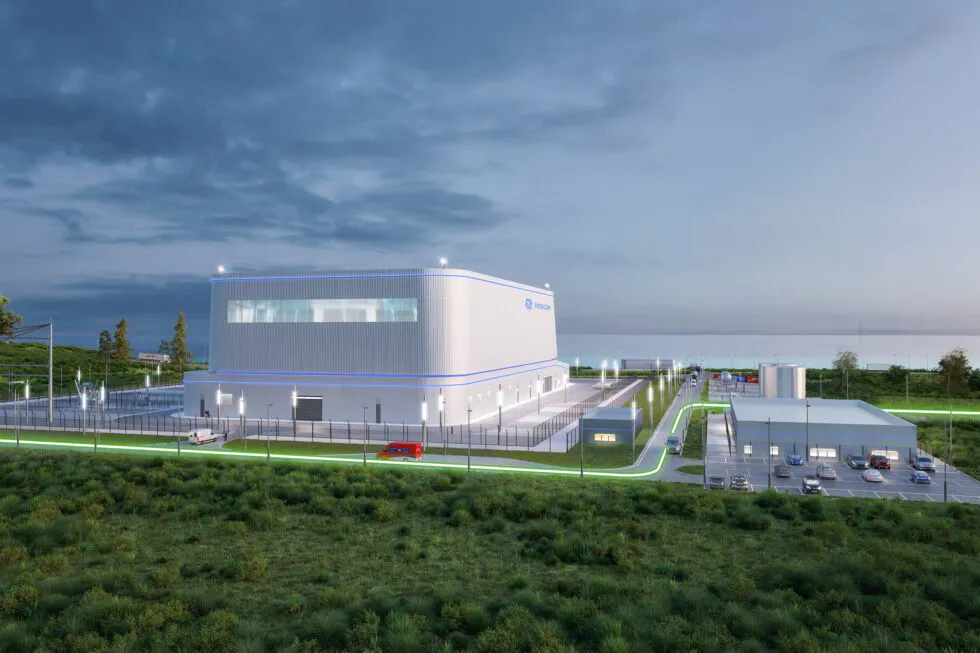Powering the future: Canada’s leadership in nuclear energy & small modular reactors

Canada’s nuclear energy sector is undergoing a significant transformation, driven by clean energy commitments, global demand for uranium and recent regulatory approvals for small modular reactors (“SMRs”).
As provinces and territories look to diversify their energy portfolios and reduce emissions, Canada is uniquely positioned to lead the next wave of nuclear innovation. Since we published the article, “Canada poised to become a leader in small modular reactors,” a uranium processing site in Ontario has received approval from regulators for the construction of the first SMRs in North America.
Nuclear power in Canada
Nuclear power has played a role in Canada’s energy landscape since the 1960s. Today, 19 Canadian Deuterium-Uranium (“CANDU”) reactors are in operation across five facilities in Ontario and New Brunswick. Together, these facilities generate approximately 14% of Canada’s electricity.
Ontario and New Brunswick remain the only provinces actively generating electricity from nuclear energy. Ontario leads with roughly 60% of its power sourced from nuclear reactors, while New Brunswick relies upon nuclear energy for approximately 40% of its power. However, other provinces are exploring nuclear development, particularly SMRs, as part of their energy transition strategies.
In a landmark development, Ontario Power Generation received federal approval to construct the first grid-scale SMRs in North America at the Darlington site in Ontario (the “Darlington Project”). Licensed by the Canadian Nuclear Safety Commission, the project is the first of four planned SMRs at Darlington, with the first unit expected to deliver 300 megawatts to the grid by 2030. This milestone not only positions Canada as a global SMR leader among G7 countries, but also signals the start of a new regulatory and commercial era in nuclear deployment.
Canada is a global nuclear resource hub as it is the second-largest producer of uranium, responsible for roughly 15% of global production. Almost all of this uranium comes from the Athabasca Basin in northern Saskatchewan, which contains the world’s richest high-grade uranium deposits. Of the 7.4 kilotonnes of uranium mined in 2022 in Saskatchewan, 80% was exported for nuclear generation abroad.
The rise of small modular reactors
While CANDU technology remains the backbone of Canada’s nuclear fleet, innovation in SMRs is accelerating.
SMRs use a technology, referred to as “nuclear fission,” to generate heat, which is converted to steam, then mechanical energy and eventually electricity. SMRs’ modular nature allows for scalable deployment and enhanced safety features, making them ideal for remote or off-grid locations.
SMRs offer significant potential beyond traditional large-scale nuclear facilities. Designs range from micro-SMRs (less than one megawatt of electricity) to grid-scale projects like the Darlington Project.
In addition to power grid integration, SMRs are being explored for industrial use, processing heat, steam production and energy supply to remote communities and mining operations, as explained by the Canada Energy Regulator in Canada’s Energy Future 2023.
Although no commercial SMRs are in operation outside of China and Russia, Canada has taken strategic steps to position itself as a global leader in SMR technology. In 2018, to bring direction to the development of SMRs in Canada, federal, provincial and utility stakeholders released A Call to Action: Canadian Roadmap for Small Modular Reactors. As this report explains, nuclear energy is becoming a more attractive and viable energy resource because of the growing push for lower carbon emissions and SMRs’ scalability and cost efficiencies.
This momentum in the nuclear sector is reinforced by Canada’s SMR Action Plan (originally published in 2020 and updated in 2022), which ties SMR deployment to the federal goal of net-zero electricity by 2035. Also in 2022, Saskatchewan, Alberta, Ontario and New Brunswick signed a Joint Strategic Plan for the Deployment of SMRs, signaling nationwide collaboration. Each province now pursues its own SMR initiatives, informed by the experience at the Darlington Project and Canada’s broader clean energy transition strategy.
Canada’s investment in nuclear power
Governments across Canada continue to invest heavily in nuclear energy development. Recent examples of this commitment at the federal level include:
- $80 million in funding for SMR development in Saskatchewan
- $970 million in investments to date from the Canada Infrastructure Bank for the Darlington Project in Ontario
- $304 million in loans over four years to support the development and modernization of a new, large-scale CANDU nuclear reactor
- $250 million for the pre-development of clean electricity projects of national significance, such as SMRs
- $69.9 million for Natural Resources Canada to reduce SMR waste, develop a nuclear fuel supply chain, strengthen international cooperation and enhance domestic nuclear safety and security
- $50.7 million for the Canadian Nuclear Safety Commission for the development of SMR regulatory capacity and international harmonization
- $50 million from the Electricity Predevelopment Program to support nuclear power generation opportunities for the Bruce C Project in Ontario
Legal and commercial considerations
From a regulatory standpoint, organizations operating in the nuclear sector must navigate a complex legal framework involving federal licensing, personnel expertise and safety, environmental assessments, Indigenous consultation obligations, public outreach and international non-proliferation commitments. For developers and investors, these requirements present both compliance obligations and risk considerations that should be addressed before a project commences.
Long-term supply agreements, export controls and public-private partnerships will play a critical role in shaping the commercial viability of new nuclear projects, particularly SMRs. Canadian firms involved in construction, mining, environmental remediation and clean technology have significant opportunities to participate in, and benefit from, the expansion of nuclear infrastructure.
With abundant uranium resources, relatively mature regulatory institutions and a strong track record of nuclear safety, Canada is well-positioned to advance the future of nuclear energy, both at home and abroad.
As government and industry embrace SMRs and other advanced technologies, legal advisers will be pivotal in guiding stakeholders through the evolving landscape of nuclear regulation, energy law and project development.
The integrated nuclear team at MLT Aikins is at the forefront of legal considerations with respect to nuclear energy, and is happy to assist both public and private organizations as they navigate the complexities of the nuclear energy sector.
Note: This article is of a general nature only and is not exhaustive of all possible legal rights or remedies. In addition, laws may change over time and should be interpreted only in the context of particular circumstances such that these materials are not intended to be relied upon or taken as legal advice or opinion. Readers should consult a legal professional for specific advice in any particular situation.






